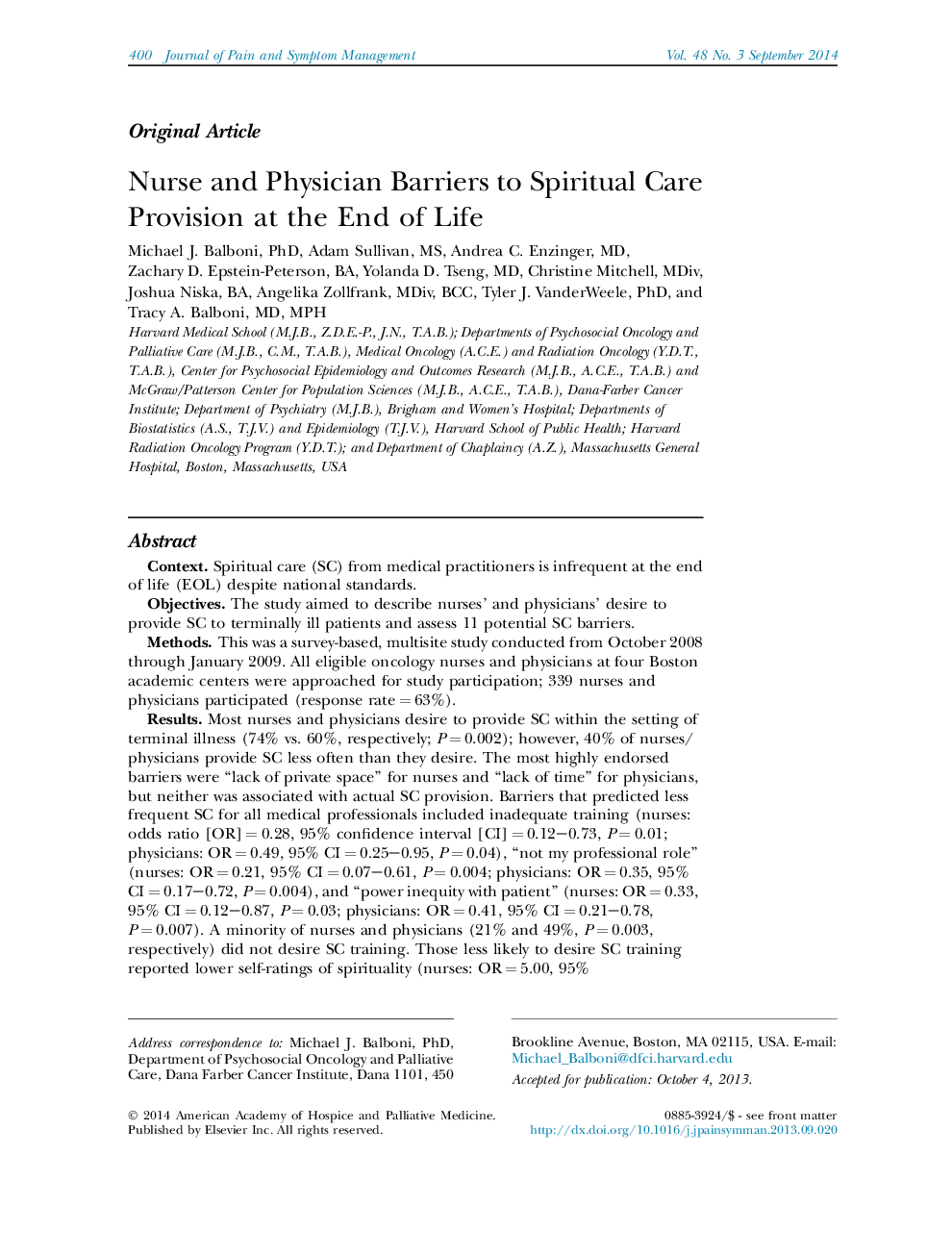| کد مقاله | کد نشریه | سال انتشار | مقاله انگلیسی | نسخه تمام متن |
|---|---|---|---|---|
| 2724142 | 1146133 | 2014 | 11 صفحه PDF | دانلود رایگان |
ContextSpiritual care (SC) from medical practitioners is infrequent at the end of life (EOL) despite national standards.ObjectivesThe study aimed to describe nurses' and physicians' desire to provide SC to terminally ill patients and assess 11 potential SC barriers.MethodsThis was a survey-based, multisite study conducted from October 2008 through January 2009. All eligible oncology nurses and physicians at four Boston academic centers were approached for study participation; 339 nurses and physicians participated (response rate = 63%).ResultsMost nurses and physicians desire to provide SC within the setting of terminal illness (74% vs. 60%, respectively; P = 0.002); however, 40% of nurses/physicians provide SC less often than they desire. The most highly endorsed barriers were “lack of private space” for nurses and “lack of time” for physicians, but neither was associated with actual SC provision. Barriers that predicted less frequent SC for all medical professionals included inadequate training (nurses: odds ratio [OR] = 0.28, 95% confidence interval [CI] = 0.12–0.73, P = 0.01; physicians: OR = 0.49, 95% CI = 0.25–0.95, P = 0.04), “not my professional role” (nurses: OR = 0.21, 95% CI = 0.07–0.61, P = 0.004; physicians: OR = 0.35, 95% CI = 0.17–0.72, P = 0.004), and “power inequity with patient” (nurses: OR = 0.33, 95% CI = 0.12–0.87, P = 0.03; physicians: OR = 0.41, 95% CI = 0.21–0.78, P = 0.007). A minority of nurses and physicians (21% and 49%, P = 0.003, respectively) did not desire SC training. Those less likely to desire SC training reported lower self-ratings of spirituality (nurses: OR = 5.00, 95% CI = 1.82–12.50, P = 0.002; physicians: OR = 3.33, 95% CI = 1.82–5.88, P < 0.001) and male gender (physicians: OR = 3.03, 95% CI = 1.67–5.56, P < 0.001).ConclusionSC training is suggested to be critical to the provision of SC in accordance with national care quality standards.
Journal: Journal of Pain and Symptom Management - Volume 48, Issue 3, September 2014, Pages 400–410
